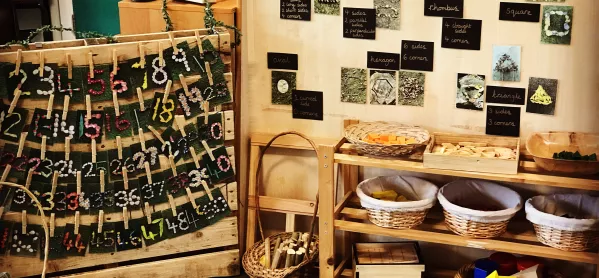Children are universally inquisitive, passionate and thoughtful. So it makes sense to harness these qualities when it comes to teaching key stage 1.
And what’s more, when children are engaged, happy and motivated, they learn and retain so much more of the information you’re trying to teach.
So it makes sense to use continuous provision with foundation stage and KS1 classes, because it uses these naturally inquisitive qualities and creates an effective environment for children to learn.
For the uninitiated, continuous provision is when there are resources in a classroom for students to learn from without an adult leading the activity.
Does coronavirus mean continuous provision can’t happen anymore?
Not at all. Your class will be operating as a bubble anyway, and nothing in the guidance prohibits continuous provision so long as resources are not shared with other ‘bubbles’.
A play-based approach allows children to consolidate and develop skills, be critical thinkers and allows them to become independent and resilient learners.
The pandemic hasn’t changed this; if anything, it has only enhanced the importance we place upon play-based learning, as many children have only accessed half a year in foundation.
With the ever-changing world, it is important that now, more than ever, children have the opportunity to recognise and process what has happened over the past six months.
How do you make continuous provision work in a Covid-19 safe environment?
Okay, so you’re keen to continue or reinstate your continuous provision, what do you need to do?
1. Support from the senior leadership team
Objections from the senior leadership team is a common (and significant) barrier teachers come across when trying to implement continuous provision.
This might be because they have little knowledge about how continuous provision works in KS1. Once your leadership team see it in action, then you will be more likely to have their support. Share your plans, and invite them to look at your set up. Often, it is the ‘unknown’ aspect that is causing the problem.
2. Look at ways to incorporate continuous provision in formal forward-facing classrooms
Just because you have to have your children in rows facing the board, it doesn’t mean you can’t still provide opportunities for continuous provision.
You can create provision baskets, which children can then take to tables. In the baskets, you might include STEM problems or small world objects to encourage storytelling.
3. Maintain general cleanliness of the classroom and resources
The question of cleaning has come up a lot recently. Is it possible to keep all of the resources clean?
Obviously, you must adhere to your school’s risk assessment but we have implemented the following rules to keep things as clean as possible.
Firstly, regular washing of hands (by adults and children) on entry and exit of the classroom.
Secondly, touchpoints such as door handles and sinks are wiped down in the morning and afternoon.
Thirdly, I’ve used a spray pump to clean the outdoor resources at the end of each day. I’ve also washed or steam cleaned all soft furnishings such as cushions.
And finally, I have involved the children in the cleaning. I know what you’re thinking, but it has worked really well. Simple tasks like wiping down pencils and bricks have become part of our daily tidy-up routine.
4. Build a support network
Introducing continuous provision to a new class can be quite overwhelming and repetitive at times. This year in particular it is more challenging as children have been out of school for so long.
Therefore, try to spend time with the children modelling your areas of provision and set your expectations from the beginning.
But the good news is that you are not alone! There is a whole community of teachers out there who have amazing ideas and would love to help and support you.
Search for continuous provision groups on Facebook, or, on Instagram, you can search the hashtags: #passionforprovision #continuousprovisionks1
Although at times it may be tough, have confidence in yourself, because the rewards will pay off.
Charlotte Evison is a Year 2 teacher at Strawberry Fields Primary School in Leeds

